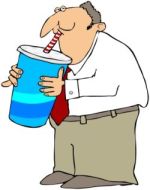Complete Proteins

The best way to illustrate complete proteins, is to start with their building blocks. Proteins are organic compounds made up of building blocks called “amino acids.” There are about 20 common amino acids. Nine of them are considered “essential” because the body cannot make them, and therefore, they must be supplied by the food we eat. This information is important to you only because, if your diet does not contain enough of these essential amino acids, you may suffer the effects of protein deficiency.
Complete vs. Incomplete
Foods that contain all of the essential amino acids are called “complete proteins.” These protein foods are generally animal foods. Plant foods do not, as a rule, have complete proteins, but by eating combinations of foods, you can get all of the essential amino acids.
For example, when you eat pinto beans with corn tortillas and rice, such as is often found in Mexican cuisine, these foods complement each other, in that each has some of the essential amino acids and when eaten together, they provide all of the essential amino acids. It is generally believed by nutritionists that it is not necessary to eat these ingredients at the same meal.
Here is a list of proteins that when eaten together become complete.
Click here for a printable copy of this list.
Complementary Proteins
Beans/Peas/ Lentils ... with Nuts
Beans/Peas and/Lentils ... with Grains
Beans/Peas/Lentils ... with Seeds
Beans/Peas/Lentils ... with Dairy
Grains... with Dairy
Nuts/Seeds... with Dairy
Nuts/Seeds... with Legumes
Dairy... with Nuts/Seeds and Beans/Peas/Lentils
Most in developed countries get enough
When you consider that most foods have some protein and many foods have significant protein, if you are eating three healthy meals a day, you are probably getting enough protein.
However, if you live in an underdeveloped country, protein deficiency may be a real concern. People in poor countries struggle to meet the minimum requirements for protein in the diet, often because they simply don't get enough food.
To read more about protein deficiency, click on this link.

